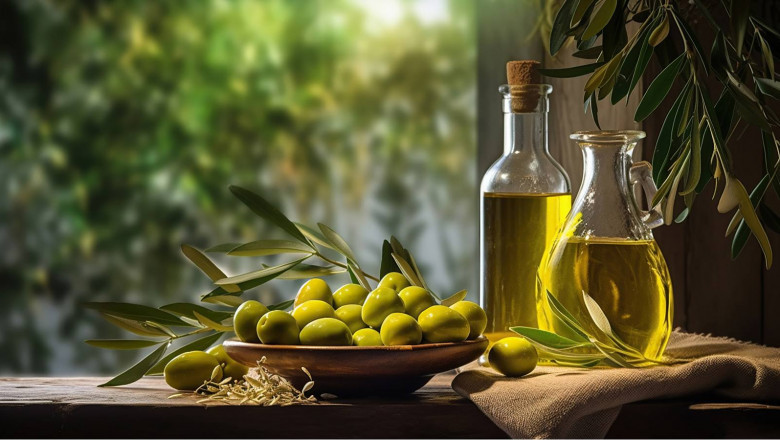views
The olive oil market is one of the most dynamic sectors in the global food industry. As a product with centuries of rich history, its significance has grown not just in culinary circles but also in health and wellness trends. With an increasing focus on healthier fats and sustainable food production, the demand for olive oil continues to soar. However, various market dynamics, including production challenges, pricing volatility, and consumer trends, are influencing the growth and trajectory of the olive oil market. This article explores the key dynamics driving the olive oil market’s evolution.
Key Drivers of the Olive Oil Market
Several factors are contributing to the sustained growth of the olive oil market. These include the rising awareness about the health benefits of olive oil, particularly its high monounsaturated fat content, and the growing consumer preference for natural, organic, and non-processed foods. Olive oil has long been a staple of the Mediterranean diet, known for its role in reducing cholesterol and promoting heart health. As health-conscious consumers turn away from processed oils, olive oil is increasingly viewed as a better option.
Moreover, the global trend toward plant-based diets, which emphasize natural and wholesome ingredients, has further fueled the olive oil market’s growth. Consumers’ shift towards vegan, gluten-free, and dairy-free alternatives has made olive oil an essential ingredient in modern kitchens. This has been reflected in its expanding presence in both developed and emerging markets.
Market Restraints and Challenges
Despite its impressive growth trajectory, the olive oil market is not without its challenges. One of the most pressing issues is the volatility in production and pricing. Olive oil is primarily produced in Mediterranean countries, and any adverse climatic conditions, such as droughts or extreme weather events, can lead to lower production volumes. For instance, Spain, Italy, and Greece, the world’s leading producers, have been experiencing fluctuations in yield due to climate change.
Additionally, the global market is often influenced by the fluctuating prices of raw olives, which can affect production costs. Consumers, particularly in price-sensitive markets, may turn to cheaper alternatives like sunflower or palm oils, which are often priced lower than olive oil. These factors can pose challenges for olive oil producers and distributors in terms of maintaining profit margins.
Competitive Landscape
The competitive landscape of the olive oil market is fragmented, with a mix of local and global players. Major brands have established strong footholds in the market, while smaller, artisanal producers are gaining attention for their premium offerings. Consumers are becoming more discerning about the quality of the olive oil they purchase, with extra virgin olive oil being the preferred choice due to its purity and flavor. This shift has led to an increase in demand for premium olive oils, which are produced using sustainable and organic farming practices.
Companies in the olive oil market are also embracing innovation to stay competitive. This includes introducing flavored olive oils, eco-friendly packaging, and premium offerings to cater to the growing health-conscious demographic. As consumers demand more transparency about sourcing and production processes, brands that highlight the quality, authenticity, and sustainability of their products are gaining a competitive edge.
Global Expansion and Emerging Markets
The global expansion of the olive oil market is particularly evident in non-traditional regions such as Asia, North America, and parts of Latin America. In countries like China and India, the increasing adoption of Western dietary habits, including the use of olive oil for cooking, is opening up new opportunities for producers. Olive oil’s status as a health-conscious alternative to traditional cooking oils is helping it find a place in the diets of millions of consumers in these regions.
North America remains one of the largest markets for olive oil, with the United States being the biggest importer of olive oil in the world. The trend of organic food consumption in the US is a major factor behind this sustained demand. Similarly, in Europe, the market for olive oil is growing steadily, particularly in Eastern European countries, where awareness about the benefits of olive oil is on the rise.
Future Outlook
The future of the olive oil market looks promising, driven by continued consumer demand for healthier, natural alternatives to processed oils. However, market players will need to navigate the challenges posed by fluctuating production, climate change, and competition from cheaper oils. Despite these hurdles, the growing awareness of olive oil’s health benefits, combined with the rise of plant-based diets, positions the olive oil market for sustained growth.






















Comments
0 comment